| Hike Southbound through Britain with Daryl May Click for Northbound hike |
|
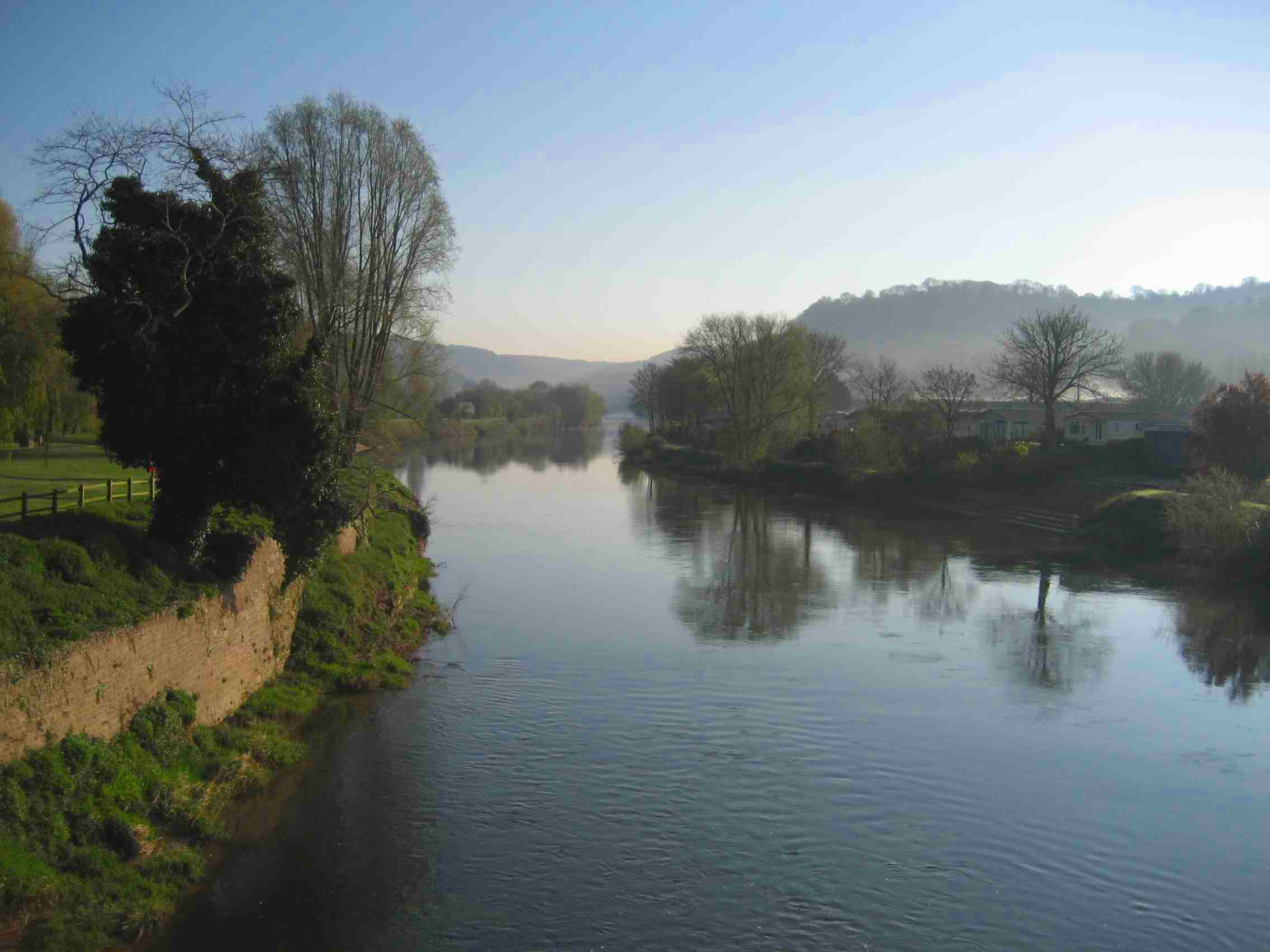 |
|
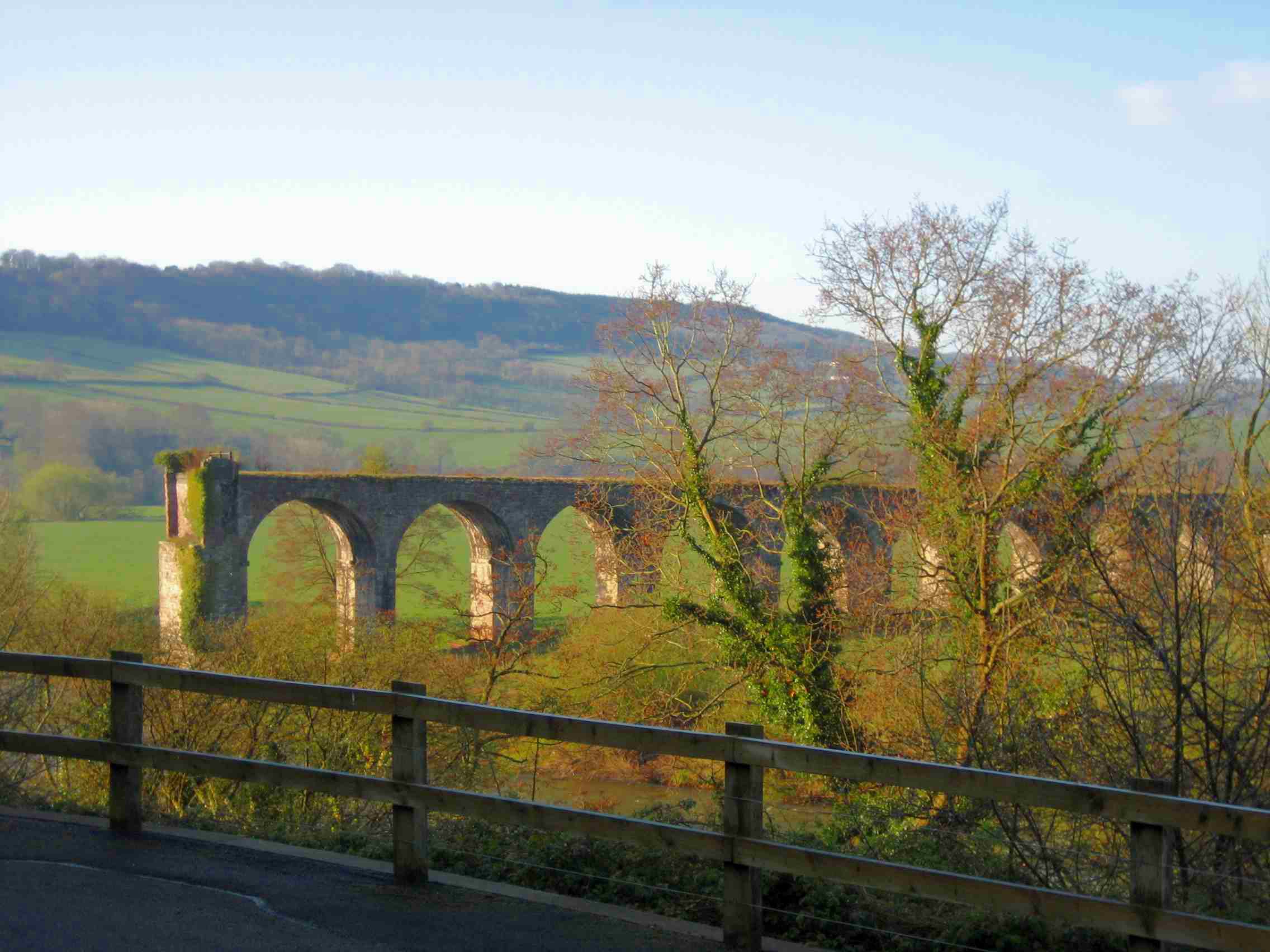 |
|
| The Wye at Monmouth; and an old viaduct |
|
| Days S44 - S52 English Midlands | |
| Southbound Home Start hiking here Scottish Highlands Central Scotland Southern Scotland North of England English Midlands English West Country Northbound Home |
Monday, April 14, 2008
Time of departure: 8.15 am Time of arrival: 4.15 pm Place departed: Monmouth, Monmouthshire Place arrived: Chepstow, Monmouthshire Miles: 17.5 Cum miles: 731.7 Percent complete: 75.3  The Coach and Horses Inn, Chepstow *** The Coach and Horses Inn, Chepstow ***Cost for bed and breakfast: £35 ($70) |
| Overview of both hikes Excerpts Statistics What others say Acknowledgments Contact me Copyright Links |
|
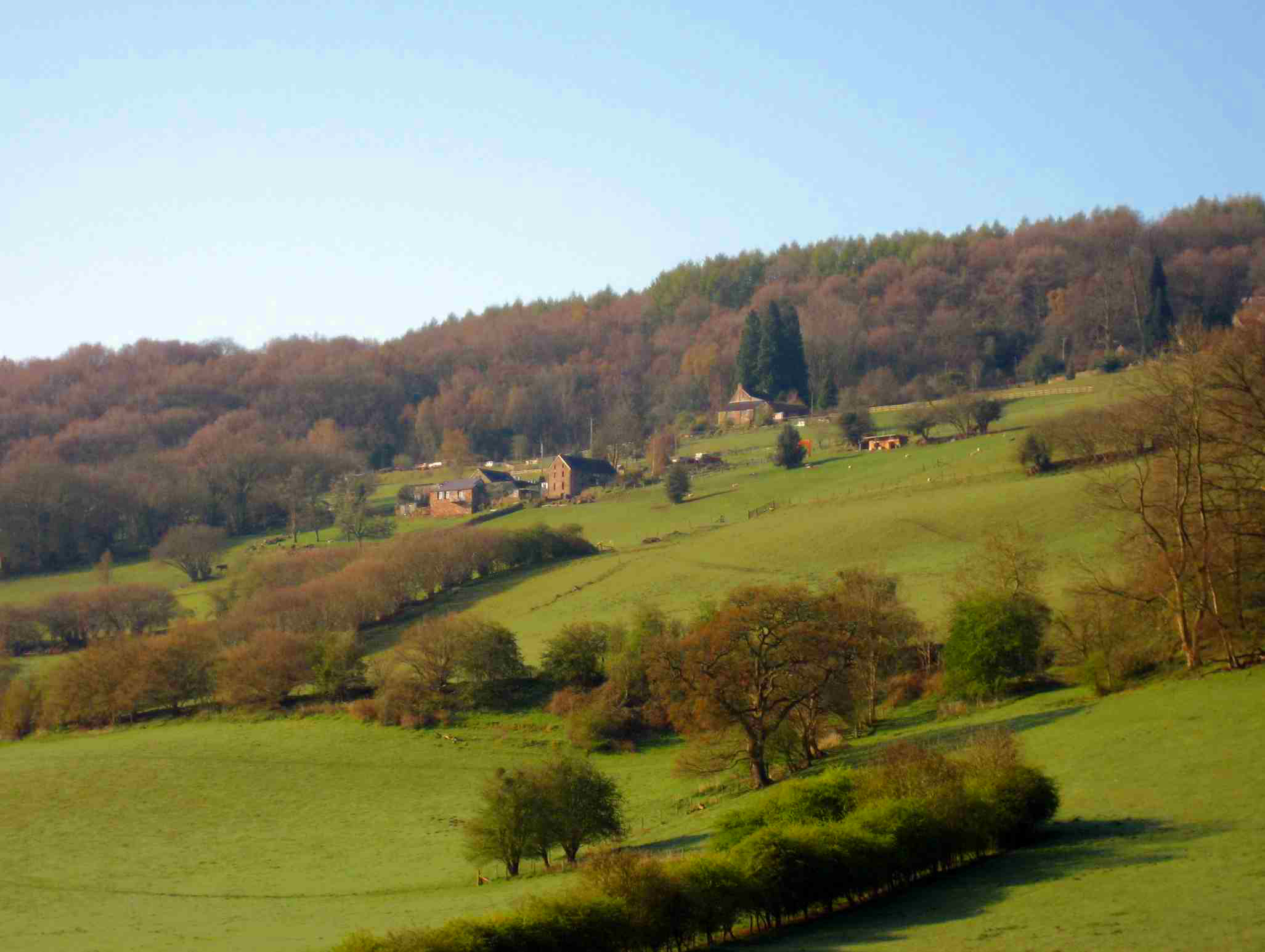 |
|
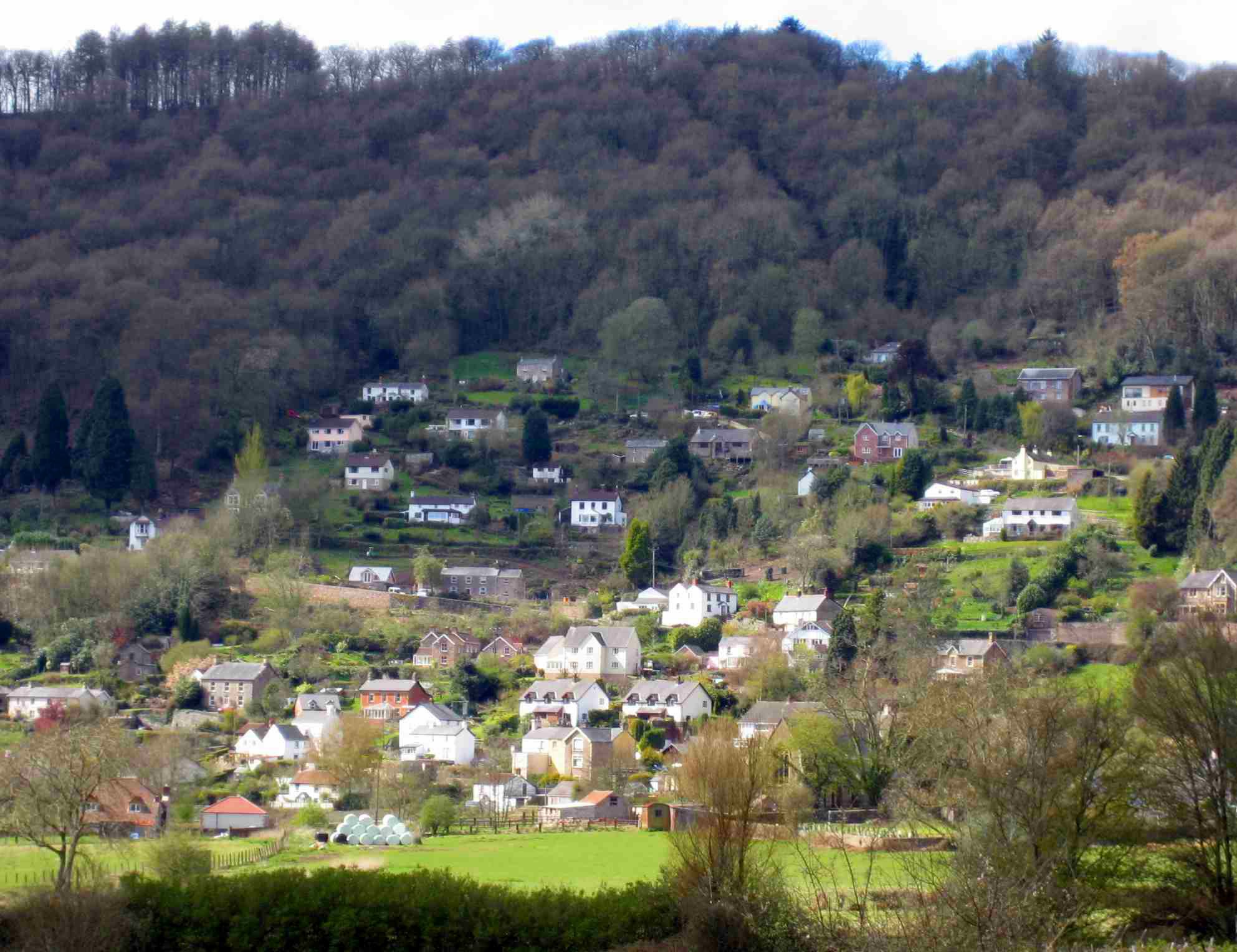 |
|
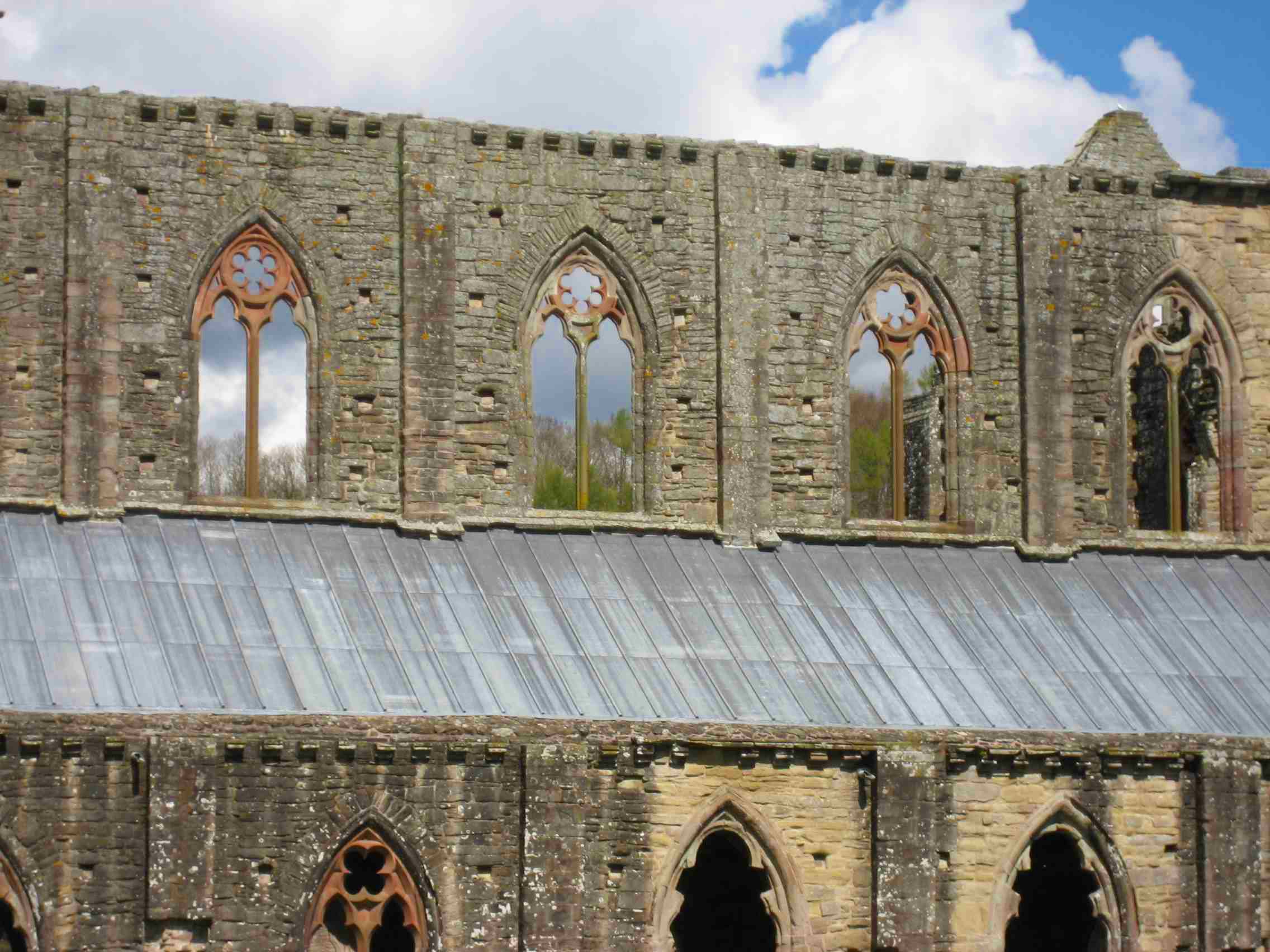 |
|
| The town on the hillside is Llandogo. The photo just above is of Tintern Abbey | |
|
.
Hot water finally arrived at the Queen's Head
in Monmouth this morning,
about twelve hours late. I paid the bill in full and left. Consumer
battles just don't fit with my hiking lifestyle - unless I'm really
provoked.
Monmouth is the birthplace of Henry V, whose likeness appears on a building front in Agincourt Square, pictured yesterday. You'll remember him as the King not only of England but of France, immortalized by Shakespeare who had him "fill the wall up with our English dead" in the Battle of Agincourt, and utter the famous double-negative,
"Let signs of war advance,
No King of England is not King of France". Bill Williams from Gloucester had arranged to walk with me this morning. With thoroughgoing decency, Bill fitted in with my place and schedule, and we left Monmouth together bright and early for a short walk on roads to Redbrook. On the way, he pointed out an old viaduct that I might have missed, and scouted out the old railway bridge at Redbrook that would carry me on a Wye River trail down to Bigsweir Bridge. Then Bill peeled off for the walk back to Monmouth where he had left his car. He had been a relaxed and considerate hiking companion, and I hiked with him next day too. The journal entry for tomorrow has his picture. At Redbrook, I had a brief visit to Daphne and John Pearson. They are friends of the Tippetts's of Sheffield and the Tippetts's friends, Adrian and Margaret Taylor. My social life is burdgeoning. The Pearson's may have wondered what Hobson was doing in their living room, but I enjoyed their company and a welcome drink during my brief stop. Also at Redbrook, I crossed the river back into Monmouthshire, which of course is in Wales, and followed a trail down to Bigsweir Bridge while the road ran on the east (English) side of the river. At Bigsweir, my plan was to cross to the English side while the road crossed to the Welsh side, thereby enjoying more peace and quiet. However, my right ankle was complaining at even the small irregularities in the trail surface, so I stayed in Wales, and followed roads past Tintern Abbey and up to 500 ft before descending to Chepstow. It was a moderately-steep climb, but today was dry for it, whereas yesterday my Llancloud ascent occurred in a heavy downpour. As I said, today's weather was dry - and it was almost summery - except for one brief shower. Signs in Wales are increasingly bilingual. This one intrigued me:
"100 yards
100 llath". Now, why not "100 yards/llath"? Is the "100" repeated because it could be possible for an English unit to differ from a Welsh one? If a yard differed from a llath by one percent, we could then have
"100 yards
101 llath". Then, if we wanted to be metrically-sensitive, and accept spelling diversity too, we'd have
"100 yards
101 llath 91 metres 91 meters".
That's a lot of signage to describe the distance to a school entrance.
Hobson's agenda with this discussion is to point out that our zeal to make everybody happy can cause us to make no one happy. Perhaps we should be more zealous in guarding against excessively embracing diversity? There's not a Welshman who doesn't understand what a "yard" means. Is it really so necessary to get the word "llath" on that sign? And what if a Welsh department of standards wanted to redefine a llath by one percent to accord with the supposed stride of Llywelyn ap Iorwerth (Llwyelyn the Great)? Would that justify "100 yards, 101 llath"? There is surely a downside to continually embracing (or even tolerating) diversity. However, in the narrow context of units, we occasionally have the metric system to save us. Professor Adrian Taylor, whom I met in Sheffield, reminds us that the English (British) inch once differed just enough from the American inch as to threaten the commonality of ammunition. After WW1, the two governments agreed to define both their inches as exactly 2.54 cm, which was an approximately equal adjustment for both. But you'll note that they didn't take the extra step of abolishing the inch and going metric. And now, because it's late and I'm in Wales, I bid you "Nos da" without offering the English translation which is "Good night" . |
|
| Day S50 © 2007 and 2008 Daryl May Day S52 | |